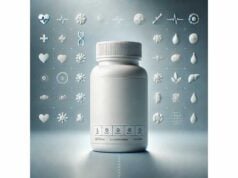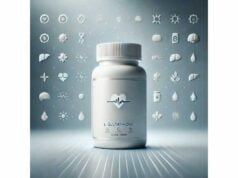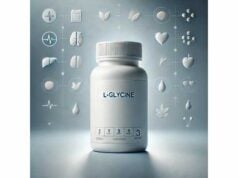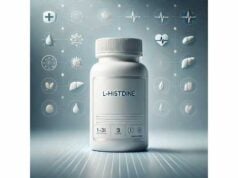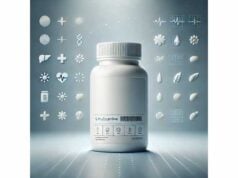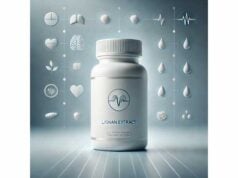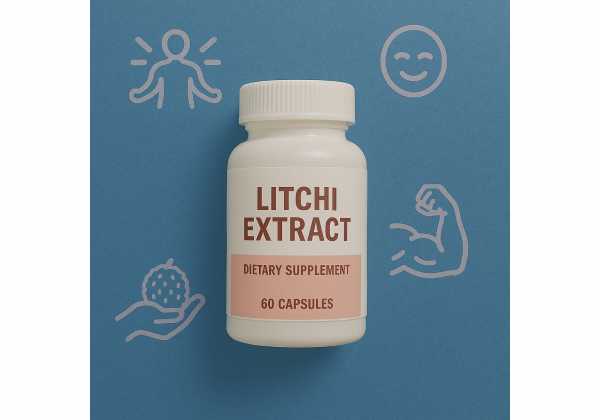
Litchi extract is a concentrated preparation made from the fruit, peel, or seed of Litchi chinensis. It is prized for polyphenols—especially procyanidins and catechins—that act as antioxidants and may influence metabolism, skin microcirculation, and exercise recovery. In supplements you will most often see low–molecular-weight lychee polyphenols (sometimes marketed as “oligomerized lychee fruit extract” or branded forms like Oligonol), which are processed to improve absorption. Early clinical studies suggest potential benefits for muscle performance in older adults, support for metabolic markers, and skin-related circulation. At the same time, litchi belongs to the soapberry family; unripe fruit naturally contains unusual amino acids (MCPG and hypoglycin A) linked to hypoglycemia when eaten on an empty stomach—context that makes quality control and sourcing important. This guide distills what litchi extract is, who might consider it, how to use it correctly, how to avoid common mistakes, and the safety details you should know, all in plain language so you can make an informed choice.
Quick Overview
- Lychee polyphenols (procyanidins, catechins) may support antioxidant defenses and modestly improve exercise or muscle performance in specific groups.
- Choose standardized, low–molecular-weight extracts; avoid products derived from unripe fruit or unknown parts.
- Typical supplemental dosage: 100–200 mg/day of oligomerized lychee polyphenols; up to 300 mg/day is used short term in research.
- Watch for gastrointestinal upset or insomnia from late dosing; stop 1–2 weeks before surgery if you bruise easily.
- Avoid if pregnant, breastfeeding, or if you have poorly controlled hypoglycemia; consult a clinician if you take diabetes, anticoagulant, or antihypertensive medications.
Table of Contents
- What is litchi extract?
- Proven benefits and properties
- How to use it right
- Mistakes and troubleshooting
- Safety and who should avoid
- What the evidence says
What is litchi extract?
Litchi extract is a concentrated source of bioactive compounds from the lychee fruit. Manufacturers typically use one of three raw materials:
- Pericarp (peel): Deep red skin rich in procyanidins (A- and B-type) and anthocyanins. These tannins drive much of the antioxidant capacity.
- Aril (pulp): The sweet, translucent flesh. It contains vitamin C and modest amounts of phenolics.
- Seed: Traditionally used in some herbal practices, but modern dietary supplements rarely use it due to limited safety data and different phytochemical profiles.
Most consumer products provide polyphenol-rich extracts, sometimes “oligomerized” to produce low–molecular-weight procyanidins. This structural change is important: smaller polyphenol oligomers are more bioavailable, meaning they are better absorbed and may reach target tissues more effectively. You may also see combination formulas where lychee polyphenols are blended with catechins from tea.
How it works (plain-English version):
Polyphenols can neutralize reactive oxygen species, modulate cell signaling pathways involved in inflammation and metabolism (AMPK/SIRT1/autophagy networks are often discussed), and support microcirculation by influencing nitric oxide and endothelial function. In exercise settings, improved blood flow and antioxidant buffering may help sustain high-intensity efforts or speed recovery. In older adults, better microcirculation and mitochondrial signaling could translate into small improvements in walking speed or muscle measures—though effects are not universal and vary by sex, dose, and study design.
Forms you will encounter:
- Capsules/tablets: The most common; often standardized to a total polyphenol percentage.
- Powders: Added to smoothies; check flavor and fillers.
- Functional beverages: Typically lower doses per serving; verify actual polyphenol content.
- Topical formulas: Sometimes used in cosmetics for antioxidant support; outside the scope of oral supplementation.
Label phrases to recognize:
“Lychee fruit extract,” “lychee pericarp extract,” “oligomerized lychee polyphenols,” “Oligonol,” “standardized to procyanidins or total polyphenols.”
Bottom line: litchi extract is not the same as eating fresh fruit; it concentrates specific polyphenols and (ideally) minimizes compounds of concern present in unripe fruit. Efficacy and safety depend heavily on which plant part was used, how it was processed, and whether it is standardized.
Proven benefits and properties
Antioxidant capacity and phenolic profile
Pericarp (peel) holds the highest phenolic concentration among lychee parts, dominated by procyanidins (A- and B-type), epicatechin, and smaller amounts of anthocyanins and flavonols. These molecules donate electrons to stabilize free radicals and interact with enzymes that govern oxidative stress. After digestion, some native compounds transform into metabolites that retain biological activity—one reason you may see benefits even when blood levels of parent compounds are low.
Exercise performance and acute metabolism
Short-term loading of oligomerized lychee fruit extract has been explored in trained individuals performing high-intensity intermittent exercise. Proposed mechanisms include enhanced fat oxidation, reduced lactate accumulation, and better microvascular blood flow during repeated bouts. Reported outcomes range from modest performance improvements to more efficient recovery markers in the hours following intense efforts. While encouraging, these studies are typically small and focused on specific exercise formats; they should be considered hypothesis-generating rather than definitive proof.
Muscle function in older adults
In community-dwelling older adults, daily intake around 200 mg of oligomerized lychee polyphenols over several weeks has been associated with improvements in walking speed and maintenance of thigh muscle area in certain subgroups. The effect sizes are generally small to moderate and may be sex-specific (with men showing clearer gains in some endpoints). Mechanistically, polyphenols may influence mitochondrial biogenesis and muscle protein turnover indirectly through AMPK/SIRT1 signaling, in addition to vascular benefits that support muscle performance.
Metabolic markers and liver fat
Given the connection between oxidative stress, low-grade inflammation, and metabolic dysfunction, lychee polyphenols have been tested in people with metabolic risk. Findings are mixed: some trials suggest favorable shifts in waist or hip circumference and select lipids; others show no significant difference versus placebo for primary endpoints such as hepatic fat reduction at 24 weeks. The take-home is nuanced: individual responses vary, and lychee extract should not be viewed as a standalone therapy for conditions like fatty liver disease.
Skin microcirculation and cosmetic angles
Antioxidant polyphenols can support endothelial function and microvascular perfusion in the skin. Users sometimes report a subtle “healthy glow” or improved post-exercise flushing. Small cosmetic studies and mechanistic work suggest potential benefits, though rigorous, large-scale clinical data are limited.
Anti-inflammatory signaling
Beyond direct antioxidant effects, lychee compounds interact with pathways that regulate NF-κB, Nrf2, and related cytokines. This can shift the redox-inflammatory balance in a favorable direction. Real-world significance likely depends on dose, duration, and baseline diet (people with polyphenol-rich diets may notice smaller marginal gains).
What benefits to expect—and not expect
- Most likely: modest improvements in exercise recovery, small gains in performance for certain protocols, incremental support for microcirculation, and subtle assistance with muscle function in some older adults.
- Possible but inconsistent: shifts in body composition or waist measurements, improvements in select metabolic markers.
- Unlikely on its own: large reductions in liver fat or dramatic changes in weight without diet and lifestyle changes.
In short, litchi extract is best thought of as a supportive tool that complements training, sleep, and a polyphenol-rich diet—not a magic bullet.
How to use it right
1) Choose the right form
- Look for standardized, low–molecular-weight lychee polyphenols (often labeled as oligomerized lychee extract).
- Confirm the plant part (fruit/pericarp) and standardization (e.g., “≥30% total polyphenols” or a specified procyanidin content).
- Avoid supplements that use unripe fruit or seed unless a manufacturer provides robust safety data, testing, and clear standardization.
2) Dosage and timing
- General daily range: 100–200 mg/day of oligomerized lychee polyphenols.
- Short-term loading (exercise blocks): 200–300 mg/day for 2–4 weeks has been used in small studies.
- Older adults targeting mobility: 200 mg/day is a common research dose.
- Timing: Take with a meal to minimize gastrointestinal upset and potential jittery feelings in sensitive individuals. For exercise days, consider 30–90 minutes pre-workout or as a daily steady dose during a training block.
- Cycling: For non-medical use, consider 8–12 weeks on, followed by 2–4 weeks off, reassessing goals and response.
3) Stacking with other nutrients
- Vitamin C: Lychee fruit naturally contains vitamin C, and co-intake can support antioxidant capacity.
- Tea catechins: Some products blend lychee polyphenols with green tea catechins to diversify flavanol profiles.
- Protein and creatine: For muscle and performance goals, these have stronger evidence; lychee extract may serve as an adjunct.
- Avoid redundancy: If you already take various polyphenol concentrates (e.g., grape seed, pine bark), watch for overlap and cost without added benefit.
4) How to read labels like a pro
- Active amount per serving: Ensure the label lists actual lychee extract milligrams and not just a proprietary blend weight.
- Standardization statement: Prefer products that report percent polyphenols/procyanidins and lot-level testing.
- Third-party verification: Look for ISO/USP/NSF testing logos or a clear certificate of analysis.
- Allergens and additives: Choose minimal excipients if you are sensitive.
5) Who is most likely to benefit
- Recreational and masters athletes seeking marginal gains in high-intensity performance or recovery.
- Adults over 55 pursuing small improvements in mobility and functional measures alongside training.
- People with low polyphenol diets who want to raise overall flavanol intake.
6) When to reconsider or reduce
- If you experience stomach discomfort, scale back to 100 mg/day or take with a larger meal.
- If you notice sleep disruption when taken late, move dosing to the morning or reduce total dose.
- If you manage blood sugar or blood pressure with medication, coordinate with your clinician to monitor for additive effects.
7) Practical dosing templates
- Everyday wellness: 100 mg with breakfast.
- Training block: 200 mg daily, split 100 mg breakfast + 100 mg pre-workout.
- Older-adult mobility focus: 200 mg with lunch, 8–12 weeks, reassess gait and leg strength.
Consistency matters: track your own outcomes (energy on intervals, delayed-onset muscle soreness, walking pace, waist or hip measures) to decide whether it is worth continuing.
Mistakes and troubleshooting
Common mistakes
- Buying non-standardized powders
Loose “lychee powders” often deliver unknown polyphenol content. You may be paying for flavor and color instead of active compounds. Fix: choose standardized extracts with verified polyphenol percentages. - Ignoring plant part and maturity
Unripe lychee fruit naturally contains MCPG and hypoglycin A, unusual amino acids linked to acute hypoglycemia in vulnerable populations when fruit is eaten on an empty stomach. Responsible supplement makers use ripe fruit parts and purification steps; not all do. Fix: verify source material and toxin testing where available. - Expecting weight-loss miracles
Some marketing implies dramatic fat loss. Clinical results are modest and inconsistent. Fix: align expectations; pair with calorie-quality diet, resistance training, and sleep. - Doubling up on polyphenols
Taking multiple high-dose flavanol products simultaneously can lead to GI upset and is unlikely to produce linear benefits. Fix: prioritize one polyphenol concentrate at a time. - Late-evening dosing
Occasional reports of restlessness or sleep disturbance appear when taken late, especially with caffeine. Fix: dose earlier in the day, monitor your response.
Troubleshooting guide
- Stomach discomfort or nausea: Take with food; reduce from 200 mg → 100 mg. If persistent, discontinue.
- No noticeable effects after 8–12 weeks: Consider that your diet already supplies ample polyphenols; either stop or retrial during a higher-intensity training phase where effects may be more apparent.
- Bruising or nosebleeds: Rare with lychee, but polyphenols can interact with platelet function; stop and discuss with a clinician, especially if you take anticoagulants.
- Glucose dips (lightheadedness): Very uncommon with quality extracts at standard doses, but if you have tight glycemic control or use insulin/secretagogues, monitor and consult your care team.
Smart buying checklist
- Standardized low–molecular-weight lychee polyphenols listed in mg.
- Plant part disclosed: fruit/pericarp, not seeds; harvested at ripe stage.
- Third-party tested for identity, potency, contaminants (and, ideally, MCPG/hypoglycin A).
- Transparent lot number and expiration date.
If you cannot verify these points, choose a different brand. Supplements vary widely, and quality is the difference between a gentle, helpful nudge and wasted money.
Safety and who should avoid
What we know about safety
Lychee fruit is widely eaten and generally safe. The safety conversation for supplements focuses on two areas:
- Intrinsic fruit toxins in unripe lychee
Unripe lychee contains MCPG (methylenecyclopropylglycine) and hypoglycin A—compounds that block fatty acid oxidation and can precipitate hypoglycemia in malnourished, fasting children. These events are linked to consuming unripe fruit on an empty stomach, not to properly made supplements. Still, their existence underscores the need for ripe sourcing and toxin testing in manufacturing. - Polyphenol pharmacology
At typical doses (100–200 mg/day), oligomerized lychee polyphenols are well tolerated. Occasional reports include mild GI upset, headache, or restlessness with late dosing. Polyphenols can modulate platelet function and interact with drug metabolism pathways (e.g., phase II conjugation), so prudence is warranted with certain medications.
Drug and condition considerations
- Diabetes medications/insulin: Polyphenols may enhance insulin sensitivity in some contexts. Monitor glucose; coordinate with a clinician.
- Anticoagulants/antiplatelets (e.g., warfarin, clopidogrel) and NSAIDs: Theoretical additive effects on bleeding. Monitor for bruising; stop 1–2 weeks before elective surgery.
- Antihypertensives: Rarely, vasodilatory effects might add to blood-pressure-lowering; monitor if you titrate medications.
- Pregnancy and breastfeeding: Avoid due to lack of robust safety data for concentrated extracts.
- Children: Avoid concentrated extracts; focus on a diverse, whole-food diet.
- History of hypoglycemia: Use cautiously; always take with meals; consider alternative antioxidants with simpler safety profiles.
When to seek medical advice
- You experience dizziness, faintness, or unusual sweating that could reflect low glucose.
- You have liver disease and plan to take any polyphenol concentrate chronically.
- You are on multiple medications with narrow therapeutic windows.
Allergy note
Lychee belongs to the Sapindaceae family (soapberries). Fruit allergy is rare but reported; discontinue immediately if you notice oral itching, swelling, hives, or breathing difficulty.
Responsible use summary
- Stay within 100–200 mg/day unless your clinician advises otherwise.
- Take with food, not on an empty stomach when you are fasting.
- Buy from companies that disclose raw material maturity (ripe fruit), part used, and third-party testing (including MCPG/hypoglycin A where possible).
What the evidence says
Evidence map at a glance
- Antioxidant/phenolic composition: Robust analytical work confirms high procyanidin content in lychee pericarp and documents how digestion influences phenolic profiles. These studies explain why lychee extract is a plausible antioxidant supplement.
- Exercise and performance: Pilot and small-scale controlled trials show short-term improvements in high-intensity intermittent exercise metrics with oligomerized lychee extract, likely through metabolic and circulatory pathways. Sample sizes are small, and protocols vary—meaning results should be interpreted cautiously.
- Older-adult muscle function: A randomized, double-blind study in middle-aged and older adults reported improvements in walking speed and maintenance of thigh muscle area at 200 mg/day—notably more evident in men than women in that dataset.
- Metabolic and liver outcomes: In a randomized trial in NAFLD, oligomerized lychee extract did not beat placebo on the primary endpoint of hepatic fat reduction at 24 weeks, though some secondary measures and within-group changes were observed. This tempers expectations and suggests lychee extract is adjunctive rather than a stand-alone therapy for fatty liver.
- Safety backdrop: Multiple studies spotlight MCPG and hypoglycin A in unripe lychee, explaining historic outbreaks of hypoglycemia in malnourished children who consumed fruit on empty stomachs. This is a food safety issue that underscores supplement quality control rather than an indictment of properly manufactured lychee extracts.
Putting it together
- Strengths of evidence: Analytical chemistry, mechanistic plausibility, and several randomized trials (though many are small).
- Limitations: Modest sample sizes, heterogeneity in extract composition, mixed results for hard metabolic endpoints, and limited long-term safety data in special populations.
- Practical takeaway: If you are a healthy adult aiming for incremental performance or recovery gains, or an older adult seeking small improvements in mobility, a standardized, low–molecular-weight lychee extract at 100–200 mg/day is a reasonable, low-risk experiment—provided you screen for drug interactions and buy from transparent vendors. For weight loss or fatty liver, prioritize lifestyle treatments; lychee extract is not a replacement for those foundations.
Future priorities
- Larger, longer multicenter trials with consistent standardization and sex-stratified analysis.
- Head-to-head comparisons with other flavanol sources (e.g., grape seed, cocoa) for cost-effectiveness.
- Routine toxin testing (MCPG/hypoglycin A) reporting on supplement Certificates of Analysis to build consumer trust.
References
- Clinical efficacy of oligonol® supplementation on metabolism and muscle health in middle-aged and older adults: A double-blinded randomized controlled trial — 2022 (RCT)
- The Efficacy of Oligonol in Nonalcoholic Fatty Liver Disease: A Randomized Double-Blinded Placebo-Controlled Trial — 2022 (RCT)
- Phenolic composition of litchi fruit pericarp — 2000
- Effects of simulated digestion on the phenolic composition and antioxidant activity of litchi pericarp extracts — 2019 (Open access)
- Detection of toxic methylenecyclopropylglycine and hypoglycin A in litchi aril of three Chinese cultivars — 2020
Disclaimer
This article is for educational purposes only and is not a substitute for personalized medical advice, diagnosis, or treatment. Always speak with your physician or a qualified healthcare professional before starting any new supplement, especially if you have a medical condition, are pregnant or breastfeeding, or take prescription medications. If you experience unusual symptoms, stop the supplement and seek medical care.
If you found this guide helpful, consider sharing it with friends or colleagues on Facebook, X (formerly Twitter), or your preferred platform, and follow us for more evidence-based wellness articles. Your support helps us continue producing high-quality content.

